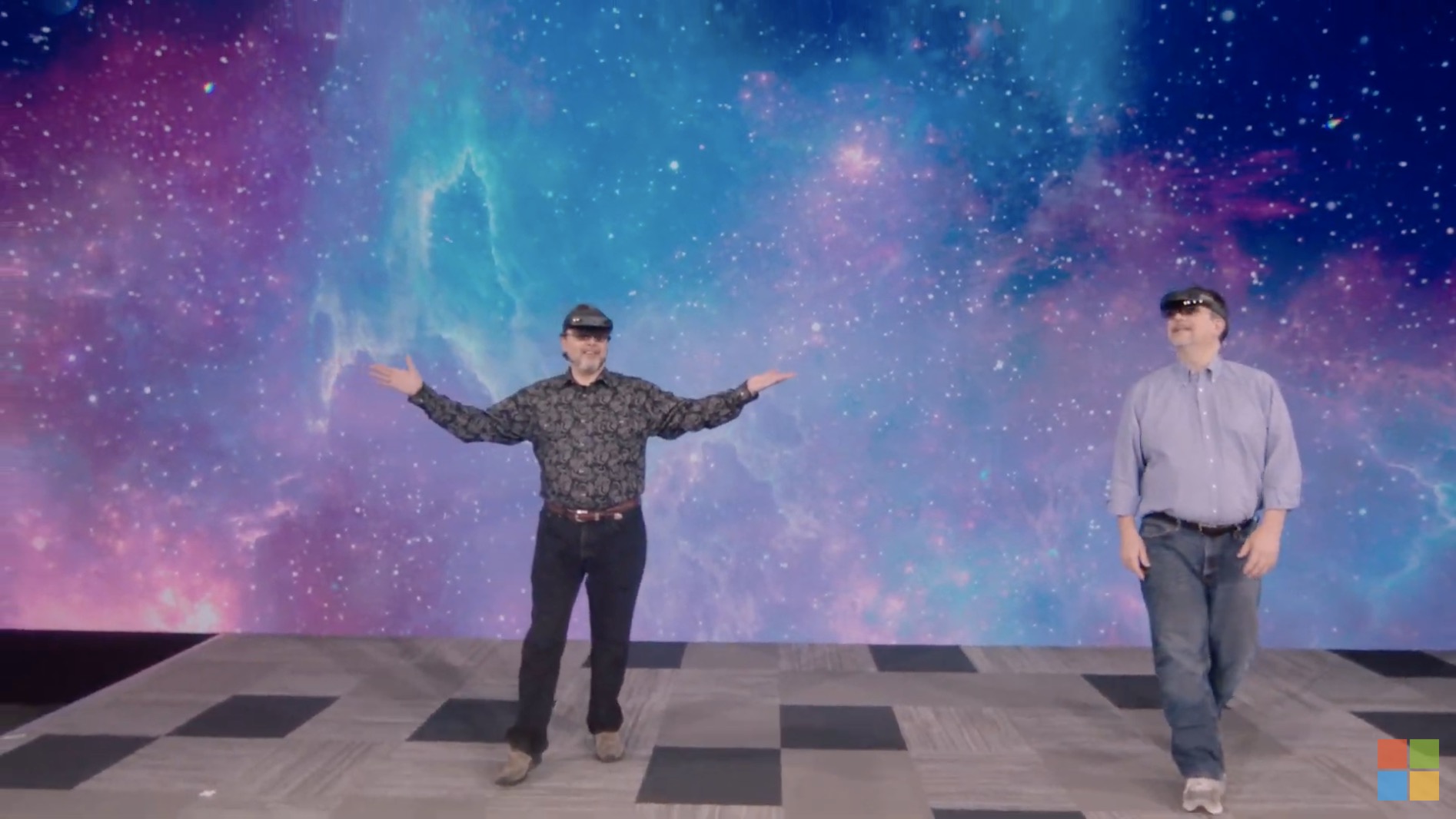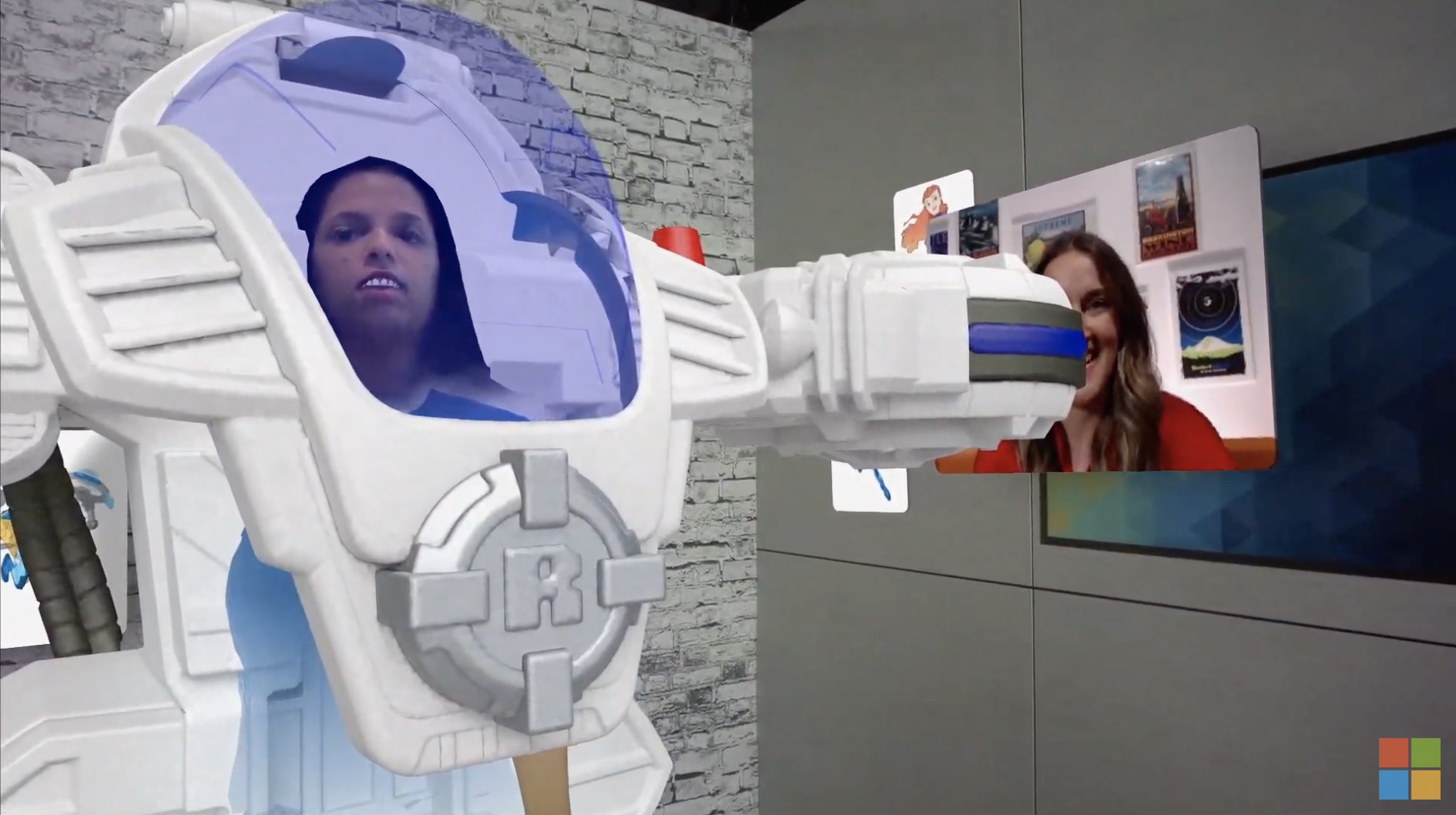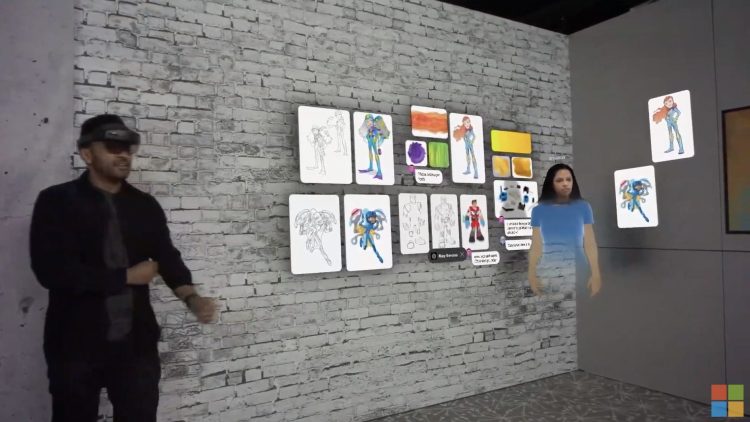If any piece of technology was going to tantalize audiences right now, it should be HoloLens 2. On paper, Microsoft’s augmented reality headset ticks all the boxes: The futuristic hardware literally defines an all-new product category and is backed by virtually unlimited development resources. So why does it feel like a disaster in the making?
Unlike the original HoloLens, which was introduced to the world with a jaw-dropping Minecraft AR demo, HoloLens 2 still hasn’t gotten past the point of being mildly intriguing. Despite spending years in development, it was unveiled in February with about as much of a bang as a new Surface computer, albeit one with a $3,500 price tag. It seemed Microsoft was content to go through the motions with the reveal, as it’s not actually expecting to sell many devices — the situation that befell the original HoloLens.
Today was a particularly bad day for HoloLens 2. For some reason, Microsoft decided to open its Build event keynote with a HoloLens demo that would depict “cutting edge technology of the 1960s” — an Apollo space mission, recreated using Unreal Engine 4. Our own Dean Takahashi posted extensive details and images of what was supposed to happen, but the demo didn’t work at all, and the presenters abruptly aborted their Apollo mission, walking off the stage to scattered laughter.

Shortly before the Build keynote ended, there was a second HoloLens 2 demo, this time showing how AR could work in a collaborative office environment. Depicting how a team at Mattel might hold a virtual product review meeting, Spatial CEO Anand Agarawala wore a HoloLens 2 on stage as two coworkers participated from afar: One used another HoloLens 2 to appear as a digitally simulated avatar, while the other appeared as a 2D video image near the wall.
Agarawala gamely led the demo, but his co-presenters appeared to be audibly feigning enthusiasm, speaking their lines with almost robotic disinterest. Meanwhile, the HoloLens-generated virtual avatar looked as stiff as an original Xbox character, and the team interactions focused on positioning and moving computer-generated objects within a shared space. It wasn’t exactly the best possible demo of next-generation technologies, or much of a justification for purchasing a $3,500 product.
I’ll be the first to admit that I wasn’t particularly impressed by HoloLens 1, and based on everything I’ve seen from the Mobile World Congress launch through to today’s Build demos, Microsoft hasn’t made a very good case for HoloLens 2, either. If I had been thinking of getting a HoloLens 2, I’d be very concerned right now, but given that price tag I’m certainly not going to be buying one, and I doubt virtually anyone else is, either.
Microsoft has had years to get both the technology and its pitch right, so it’s not hard to imagine how a second-generation augmented reality headset should be demonstrated at this point. It goes without saying that there should be demo content that evokes genuine rather than feigned excitement. Radically transforming the user’s controllers, environment, and/or collaborators is table stakes for even smartphone AR these days.

As a company, Microsoft has access to so much well-established IP that there’s no excuse for boring audiences in 2019. The old Minecraft demo had the right idea, but by now the graphics and immersion of any HoloLens demo should be enough to blow minds. Even if the headset cost only $1,000, people using it for demos should be so awed by what they’re witnessing through the lenses that they can barely speak. Otherwise, what’s the point of spending all that money and wearing a heavy, stupid-looking visor?
It’s not clear to me at this point that Microsoft has an answer to this question. Years into the “holographic computing” experiment, HoloLens 2 seems to be on the same autopilot-guided course as so many prior Microsoft hardware products — destined to be modestly adopted and then forgotten once Apple and others show up with more thoughtfully designed solutions. For Microsoft’s sake, I hope all the time and money spent on HoloLens research yields some tangible benefits, because if today’s Apollo simulation is any indication, the company’s latest headset doesn’t seem like it’s headed for the stratosphere anytime soon.


